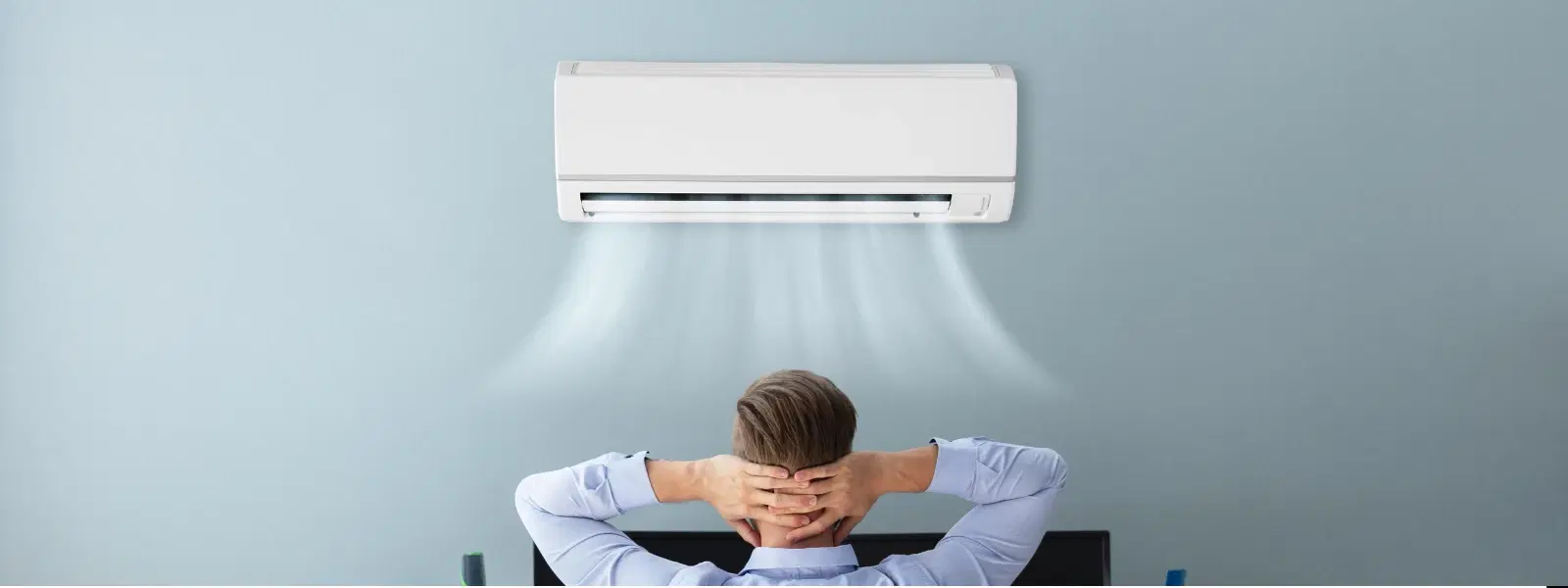
Home Appliances
•05 min read

Imagine a scorching day when your air conditioner is running but not lowering the temperature, leaving you sweltering in discomfort. It’s a frustrating scenario that many of us have experienced. This blog post walks you through a comprehensive checklist of the causes of air conditioner not cooling properly and offers actionable air conditioner troubleshooting tips to restore comfort in your home.
Identifying and addressing air conditioning problems early is crucial. A well-maintained system not only provides efficient cooling but also reduces energy costs. Regular maintenance helps spot issues before they escalate, ensuring a longer lifespan for your appliance.
Routine check-ups can prevent many common AC issues. Performing regular cleaning, inspection, and servicing can greatly improve performance. Services like ZipCare Maintain ensure that your air conditioner remains in prime condition, offering reliable home cooling and ensuring your device’s longevity.
Clogged or dirty air filters restrict airflow and reduce the effectiveness of cooling. To investigate, turn off your AC and check the filters. If you notice significant dust accumulation, remove and clean them by rinsing with water and using mild detergent. Allow them to dry thoroughly before reinstalling. This simple step is one of the most effective air conditioner repair practices to improve overall performance.
Low refrigerant levels can dramatically impact cooling performance. A refrigerant leak not only hampers efficiency but can also be hazardous. If you suspect a leak, it is prudent to contact a certified technician for inspection and repair. A professional service can safely check, refill, and rectify the issue, ensuring that your air conditioner cools properly.
Incorrect settings or a malfunctioning thermostat can lead to an AC not blowing cold air at the desired level. Simple troubleshooting includes verifying the set temperature, ensuring it aligns with your cooling needs, and replacing batteries if needed. If the problem persists, it might be time to consider professional repair options to resolve thermostat malfunctions.
(4)-38fdf8eb-a932-4d15-b973-a4529cc23cec.png&w=3840&q=75)
The condenser unit plays a key role in the cooling process by releasing heat. Over time, debris or leaves can block the unit, hindering proper heat exchange. Always switch off the AC before gently cleaning around the unit with a soft brush or moderate water flow.
Electrical faults, such as a tripped circuit breaker or blown fuse, can also be the reason why your AC is not cooling properly. Check for any loose electrical connections and ensure all safety measures are in place. If troubleshooting electrical issues proves to be challenging, seek help from a professional technician.
Frozen evaporator coils are a common sign of restricted airflow or low refrigerant. When coils freeze, cooling efficiency drops sharply. To fix this, turn off the AC and allow the ice to melt. Once thawed, clean the coils and ensure that filters are free from dirt. Preventing future freezing involves regular maintenance and vigilance in monitoring airflow.
Expert Tip from Tata Neu
Did you know that regular maintenance of your air conditioner can extend its lifespan and improve its efficiency? Consider using Tata Neu's ZipCare services for comprehensive maintenance and protection of your home appliances.
Maintaining a schedule for cleaning and inspecting your air conditioner can prevent many common problems. Visual inspections can detect early signs of wear and tear, helping avoid costly repairs. Professional services like ZipCare Maintain ensure that your unit operates at peak performance, offering peace of mind and reliable cooling whenever needed.
Set your thermostat to an efficient temperature to balance comfort and energy usage. A well-adjusted thermostat not only ensures consistent cooling but also helps save on electricity bills. For modern solutions, smart thermostats provide precise control and adaptability, making temperature management seamless.
(7)-a9ef3030-db54-4a2c-8e97-d3861b10bcef.png&w=3840&q=75)
Proper insulation plays a vital role in maintaining a cool indoor environment. Check the insulation around windows, doors, and other vulnerable areas to prevent the intrusion of excessive heat. Simple improvements in home insulation can alleviate unnecessary strain on your air conditioner and improve its cooling efficiency.
Start by inspecting the air filters for dirt and debris and ensure the thermostat is properly set. If the problem persists, inspect the exterior unit for obstructions and consider professional help.
Cleaning or replacing the filters every 1-2 months during peak usage will help maintain optimal airflow and cooling efficiency.
No, fixing refrigerant leaks should be left to certified technicians who can safely repair the leak and restore the refrigerant levels.
Frozen coils often result from restricted airflow, low refrigerant levels, or dirty filters. Thaw the unit and resolve the underlying issues to restore proper function.
Regular maintenance, cleaning filters, proper insulation, and optimal thermostat settings significantly enhance energy efficiency and performance.
In summary, understanding the common causes of air conditioner not cooling properly is essential for timely troubleshooting and maintenance. Whether it’s ensuring clean air filters, addressing refrigerant issues, or optimising thermostat settings, a systematic approach can save you from the inconvenience of a failing cooling system. Exploring advanced care options like regular maintenance services not only protects your air conditioner but also contributes to long-term savings. Trust in reliable service and proactive maintenance to keep your home cool and comfortable, while enjoying the rewards that come with smart, well-informed choices.